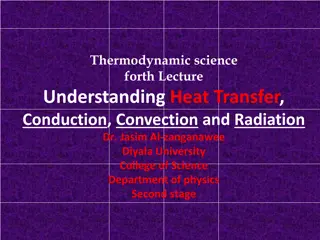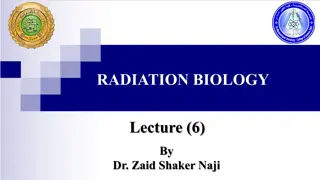Understanding Redox Reactions and Ionic Compound Formation
Explore the concept of redox reactions through the process of ion formation, where elements lose or gain electrons to create ionic compounds. Learn about oxidation (ox) and reduction (red) in chemical reactions, and how to identify which elements lose or gain electrons based on charge changes. Discover practical applications such as lithium ion batteries in electric cars. Dive into the world of chemistry with a focus on ionic bonds, electron motion, and the formation of minerals and rocks.
Download Presentation

Please find below an Image/Link to download the presentation.
The content on the website is provided AS IS for your information and personal use only. It may not be sold, licensed, or shared on other websites without obtaining consent from the author. Download presentation by click this link. If you encounter any issues during the download, it is possible that the publisher has removed the file from their server.
E N D
Presentation Transcript
Ion formation viewed a different way: `redox reactions (pp 64-67) Ionic compound formation results from e- `pitch and catch e- Na+ Cl- Na + Cl Loses e- Gains e- Reduction-oxidation Abbreviated as Redox Na pitches => oxidized (ox) Cl catches => reduced (red) red= reduction ox=oxidation
Old school Memory devices: e- Na+ Cl- Na + Cl Loses e- Gains e- ox=oxidation red= reduction Leo-Ger Lose electrons oxidation-Gain electrons reduction Oil Rig Oxidation is losing (e-). Reduction is gaining (e-).
Identifying who loses and gains.follow the charge change ID `ox and red in reaction below 2e- Mgo + Cu2+ Loses 2e- Gains 2e- ox 2e- Mg 2+ + Cuo Memory device: Leo-Ger Lose electrons oxidation (ox) Gain electrons reduction (red) red +1 -1 2Nao + Cl2 Loses 2e- Gains 2e- ox 2NaCl more practice in class on board . red
Ford Focus all electric car High surface area lithium ion batteries
Power cycle what happens as you drive Key Chemistry trick: LOAD 0 +1 Lix C6 Anode (left side =ox) xLi+ + 6C + xe- 0 +1 Li1-xCoO2 + xe- + xLi+ LiCoO2 Cathode (right side=red) Lio embedded in `intercalation compounds on both sides
What weve just covered Answer: mostly ionic bonds between (+) and (-) atoms with inert gas count of electrons. Practical bonus: electron motion as ions form can do useful work, .e.g. make a battery CHAPTER 2: DIRT On to the organic stuff What makes rocks the way they are ? Inorganic stuff (text version, p. 46 Why do minerals exist?
Chapter 3: Diamonds Chapter 2: Dirt What about the organic stuff ??? What holds together diamonds, poo and you ??? (text version: Why is carbon special ?)
Organic (Plastics, poo and you) vs. Inorganic (Minerals/Rocks) Organics Ex: Mostly made of C, H, O Some N (minor pieces of rest of Periodic Table Inorganics Ex. limestone Saran wrap Mostly made of Metals, O, rest of Periodic Table (C plays only a small part) Main electronic arrangement: covalent bonds Main electronic arrangement: Ionic bonds
Organics vs Inorganics : the difference in picture form covalent bond: the `new idea ionic bond Organics H Inorganics H H H H H H H H C C C C C C C C H H H H H H H H H Octane ( gasoline) 2D image Note the absence of charge in organic picture Octane in 3D model
Language basics of the `covalent bond Other common names for covalent bond Electron pair bond Valence bond or valence pair bond Lewis pair bond Shared electron bond
Language basics of the `covalent bond Bond language and electronic book keeping: part 1 H H H H H C C H C C H H H H 1 line= single bond with 2 electrons (bond order 1) 2 lines= double bond with 2 x 2= 4 electrons (bond order 2) # bonds 7 6 7 x2=14 6 x 2=12 Total of bonding e-
Language basics of the `covalent bond Bond language and electronic book keeping: part 1 (continued) H C C H 3 lines = triple bond With 3 x 2= 6 electrons (bond order 3) # bonds 5 Total of bonding e- 5 x 2=10
In-class Board practice counting bonds and electrons for organics























